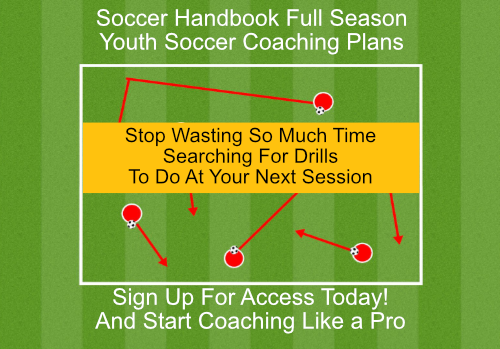There are three words that took gegenpressing from the soccer sidelines to the spotlight and they were: “Heavy Metal Football.” The turn of phrase, invented by Liverpool manager Jurgen Klopp as a metaphor for his own style of the gegenpress was a perfect fit for the tactic. While we’ll cover Jurgen Klopp’s style of gegenpress, first let’s explain what a gegenpress is, and what makes it a unique counter-attack style.
What is Gegenpressing?
‘Gegenpressing’ is a mashup of German and English words. In English, it is also called “Counter-pressing.” What makes gegenpressing different from a standard counter-attack is that it specifically applies to when your team loses possession, and it’s enacted anywhere on the field. And is particularly dangerous deep in the opponent’s end.
Here’s a standard gegenpress game situation:
- Your midfielder accidentally turns over the ball to the opposing team’s center-back.
- Immediately the midfielder that lost possession as well as the strikers nearby begin to close in on the opposing defender with the ball.
- This forces the defender to make a mistake and rewards your team with possession again in a highly favorable position.
That’s the gegenpress made simple! The highest risk is not successfully closing down on the first player with the ball causing multiple members to be potentially caught out of position.

Weaknesses of the Gegenpress Strategy
Knowing when to stop or fall back into a defensive formation is the biggest challenge for every team that relies heavily on gegenpressing. Failure to do so results in your midfield being caught too high up the field and leaving your backline outnumbered. This can cause them to get picked apart by the opposition who are free and clear, charging up the field.
The secondary challenge is fitness. Gegenpressing is a strategy that requires incredibly fit strikers and midfielders that are prepared to run endlessly and play defense. All of this can lead to fatigue and burnout within the squad as they struggle to keep up the relentless pace through the entire season with knocks, bruises, bumps, and even injuries. Even within a single game constant gegenpressing without a goal can leave your team ill-prepared for extra time compared to the opposing team that hasn’t had to run nearly as much.
Gegenpressing isn’t a strategy that’s as compatible with bigger poacher-style strikers that prefer to nab their goals within the box or in the air. Strikers that have not developed their fundamental defensive skills are going to struggle in a gegenpress system.
Variations of the Gegenpress Strategy
Surround The Ball: As simple as it sounds, all nearby players quickly close in on the ball hoping to force a mistake or take possession back. This should be considered the most fundamental version of the gegenpress. Jurgen Klopp’s Liverpool side perfected this style of gegenpress before evolving their game further.
One in, the rest cover: This variation of the gegenpress has one player closest to the lost possession close down on the ball while all other surrounding teammates tightly cover any nearby potential pass recipients. While less aggressive, this style lowers the chances of your midfielders being caught out of position. This style was made popular by Jupp Hynckes while he was the manager at Bayern Munich.
Shut Down Passing Lanes: This strategy requires all nearby defenders to intentionally cut off available passing lanes. The principle behind this variation of the gegenpress is that with all available passing lanes cut off the player with the ball will have to try to force a bad passing opportunity. Capitalizing on this turnover allows the pressing to regain the ball quickly and as high up the field as possible.
Gegenpressing vs. Tiki-taka
The biggest difference between gegenpressing and tiki-taka can be classified as a “sense of urgency”. Gegenpressing is an immediate reactive soccer strategy that aims to win the ball back at the spot it was lost and immediately turn to regaining possession into an attacking play. Tiki-taka focuses on retaining possession, and recycling the ball throughout the midfield and attacking lines with short quick passes hoping to wear down the defense, and open up a scoring opportunity.
The height of the Tiki-Taka strategy was embodied by the Barcelona squads from 2008-2012. These squads terrorized La Liga with their fast-paced technical style and approach to the game.

Gegenpress On!
Gegenpress has grown in popularity for two reasons.
First, it’s been successful in some of the highest leagues in the world like the Bundesliga and the Premier League. That multiple teams in different leagues, and even in different eras have been able to adopt the strategy and succeed is a testament to its effectiveness.
Second, is that the fundamentals of gegenpressing are very easy to teach to soccer players at any age or skill level. It doesn’t take talent to hustle and close down on the ball, and that’s all players really need to do to try and force the error. An organized team of average young players that understand gegenpressing can quickly overwhelm a disorganized, but talented team.
Easy to understand, easy to implement, and easy to see results from. The Gegenpress is a simple strategy that’s an all-around win for youth coaches. Even better, it’s a strategy that emphasizes the team. Every player is required to engage in order for a successful gegenpress, which means every player shares that success!






